A true Highlight: Our Sculpture Spots 2024
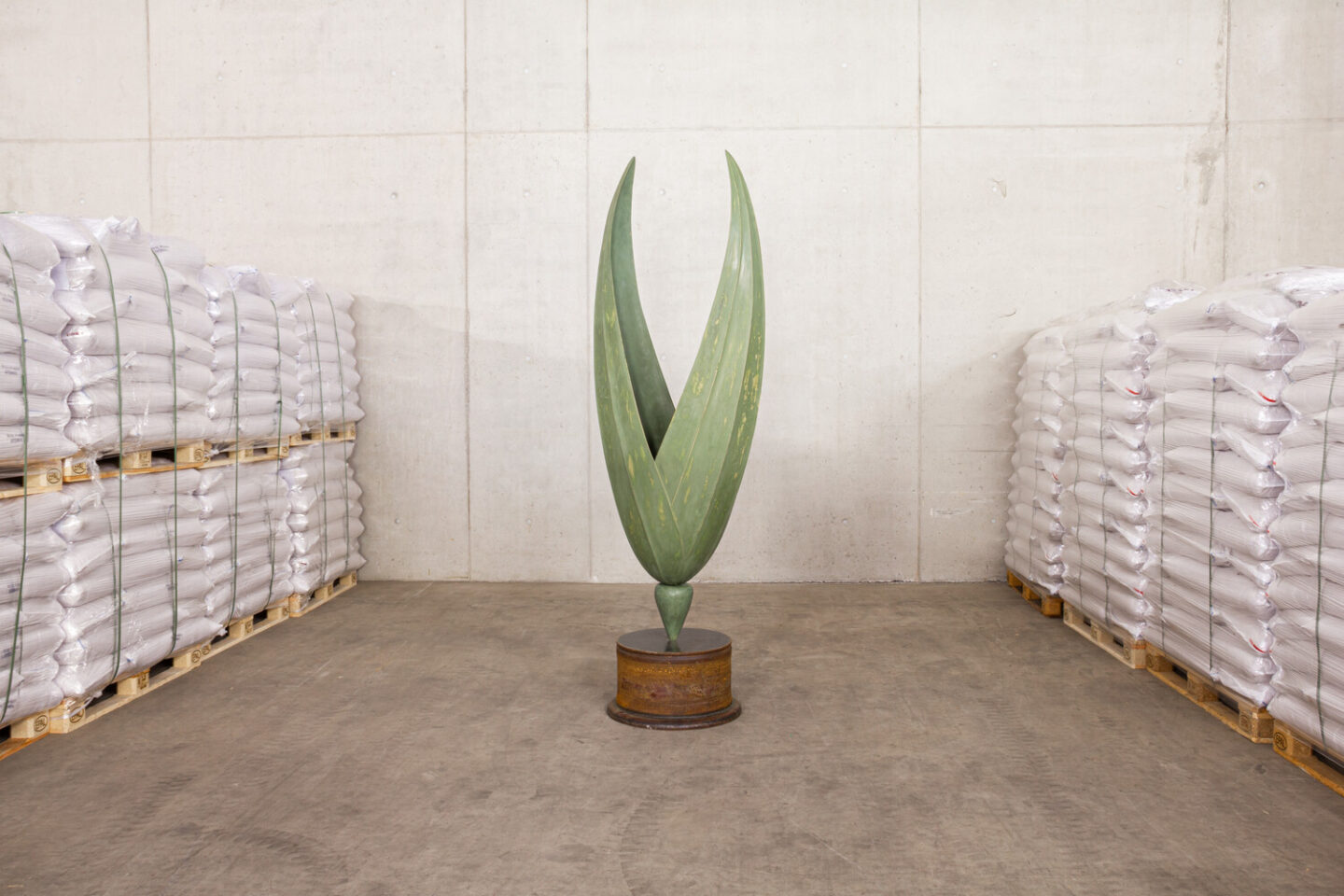

In response to Art Düsseldorf’s call for gallery applications for its sculpture program last year, the event received an overwhelming response, with numerous submissions showcasing exceptional sculptures. Ultimately, eight outstanding pieces were selected for display during the 2023 fair, seamlessly integrated into the vibrant tapestry of the event.
Following the previous year’s resounding success, the process was repeated this year with an expansion in available spots. A total of 14 sculptures were selected this time, each finding its place within the designated spaces across Areal Böhler.
The 14 projects present a diverse array of sculptures, showcasing various manifestations from both emerging and established artists. Serving as interruptions within the gallery tour, they offer spaces for contemplation and reflection, punctuating the experience with opportunities for respite. Certain sculptures beckon visitors to engage directly, while others contemplate themes of nature and humanity, or even reconfigure the surrounding space. Consequently, alongside the galleries’ programs, there exists a wealth of discovery awaiting exploration.
Text by Laura Helena Wurth and Alexander Wilmschen.
COSAR
Erika Hock “Salon-Tactile”
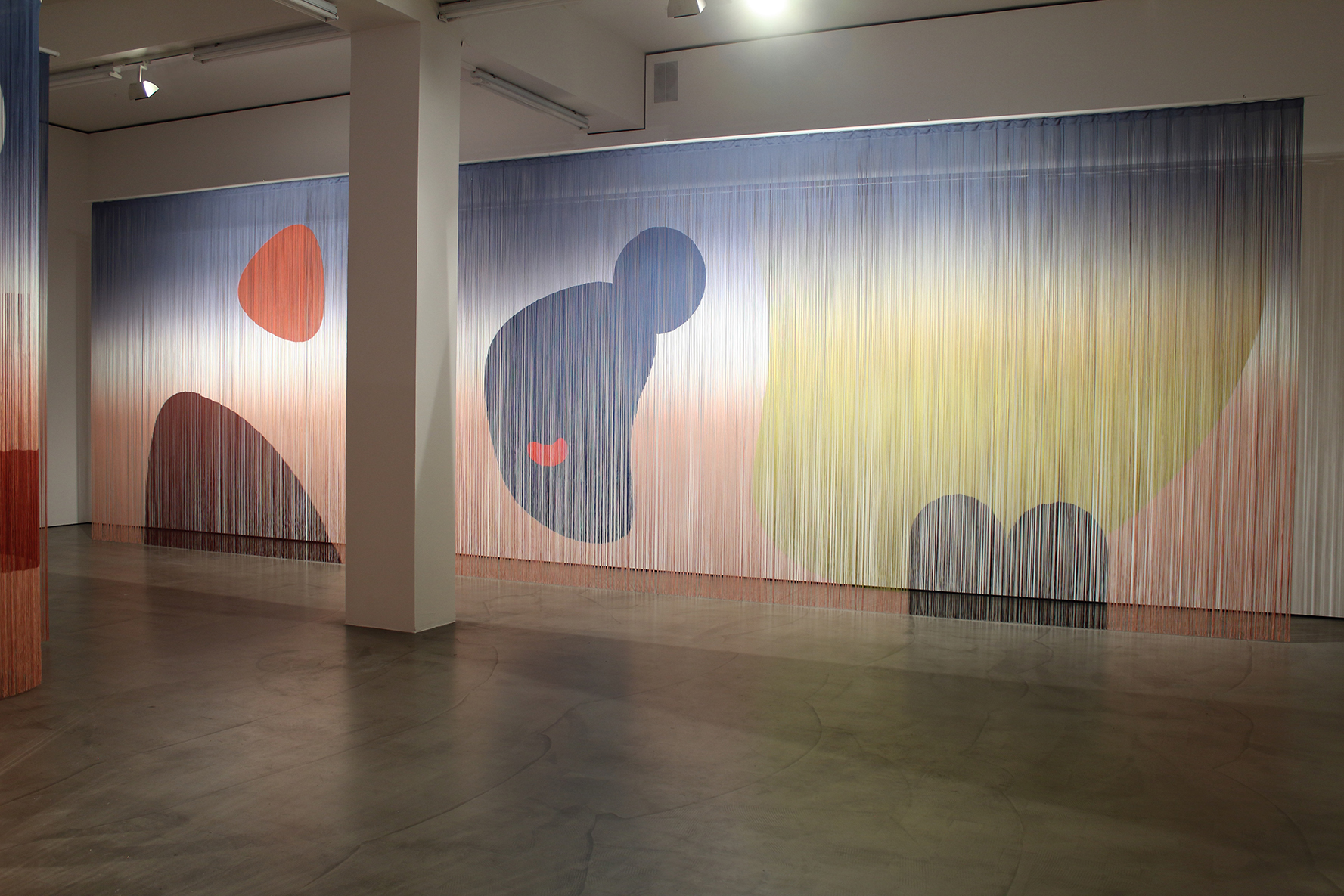
Erika Hock: Salon-Tactile, 2020, 330 x 1050 cm. COSAR.
Erika Hock’s monumental sculpture beckons exploration, inspiring a desire to physically engage with its imposing presence. The intricate threads forming the curtain compel one to run their fingers along, tracing the mesmerizing patterns meticulously crafted.
This expansive artwork redefines the relationship between space and image, introducing a dynamic interplay where the boundaries blur. It embodies a moving image, evoking a sense of shimmering fluidity that defies precise categorization, mirroring the complexities of our contemporary existence. Hock’s work transcends conventional design, creating enigmatic spaces that invite interpretation and reflection.
Having studied under Rita McBride in Düsseldorf and elsewhere, the exhibition feels like familiar territory for Hock. Born in Kyrgyzstan in 1981, her family relocated to Germany in 1991, where she now resides and works in Cologne, infusing her art with a rich tapestry of cultural influences and experiences.
Galerie m
Franka Hörnschmeyer “Oszilloskop”
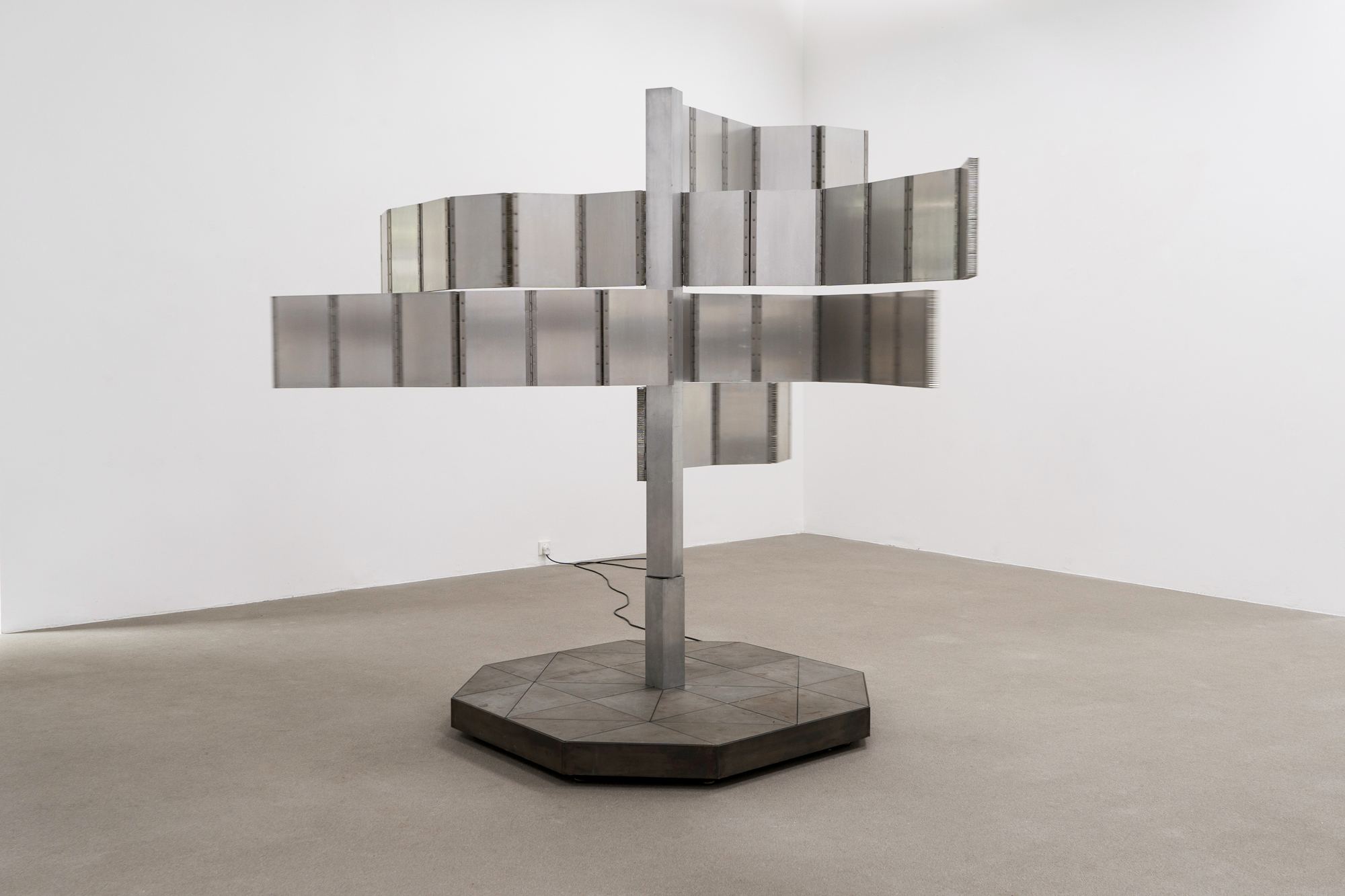
Franka Hörnschemeyer: Oszilloskop, 2014/2021, 280 x 346 x 346 cm. Galerie m.
Franka Hörnschemeyer, who has been teaching at the Kunstakademie Düsseldorf since 2015, presents a continuation of her work “Oszilloskop”. Drawing inspiration from Heinrich von Kleist’s essay from 1810, which delves into the genesis of inner movement in marionettes, Hörnschemeyer explores the influence of consciousness on the grace and beauty of motion. She translates this concept into a seemingly technical aesthetic, wherein multiple aluminum honeycomb composite panels are interconnected via hinges, creating an intricate dance when set in motion. The resulting display is a captivating interplay of components, simultaneously expansive and elegant.
The origins of this movement remain shrouded in mystery, akin to a cryptic message from a bygone era’s vision of a technologically advanced future. Its workings and motivations elude comprehension, reminiscent of actions attributed to quasi-divine beings. The fact that we perceive these mechanized processes as beautiful fundamentally challenges our understanding of nature, technology, and beauty itself.
Born in Osnabrück in 1958, Hörnschemeyer pursued her studies at the HFBK in Hamburg before settling in Berlin, where she currently resides.
Meyer Riegger
Eva Kotátková “Speech Organ of Ema, a Girl Who Eats Stones”
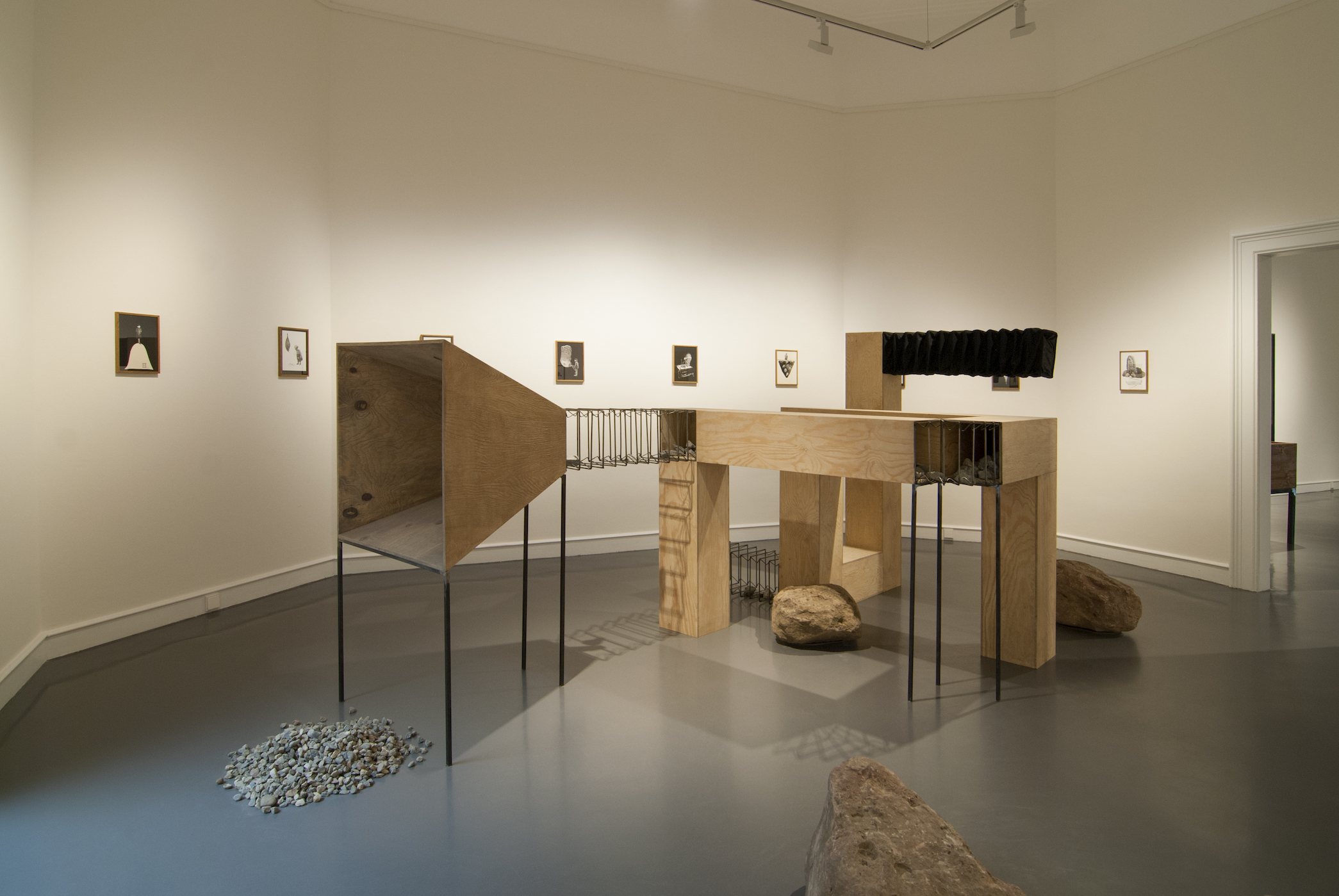
Eva Kotátková: Speech Organ of Ema, a Girl Who Eats Stones, 2014 circa 3 x 5 m. Meyer Riegger.
Eva Kotátková, born in Prague in 1982, continuously probes the structures of power and mechanisms of control imposed upon individuals. Through her work, she unravels these underlying structures, often evoking a sense of oppression as she precisely and relentlessly exposes them in loosely connected installations.
Kotátková’s artistic practice traverses multiple disciplines, blending elements of research and poetry with sculpture and installation. Her sculptures, like the one depicted here, carry titles that offer poignant insights into their themes. For instance, “Eating Stones” suggests a form of silencing or alienation, symbolizing the suppression of speech, particularly experienced by marginalized groups such as the elderly, children, and disabled individuals – those whose perspectives Kotátková often explores.
Despite the attempt to silence, the stones and their symbolic weight persist, representing the enduring presence of oppression. However, Kotátková’s work also contemplates the possibility of regaining language and freedom, inspiring moments of reflection and contemplation.
Eva Kotátková’s thought-provoking artistry has garnered recognition, leading her to represent the Czech Republic at the prestigious 60th Venice Biennale.
Galerie Norbert Arns
Nadine Schemmann “Work in Progress”
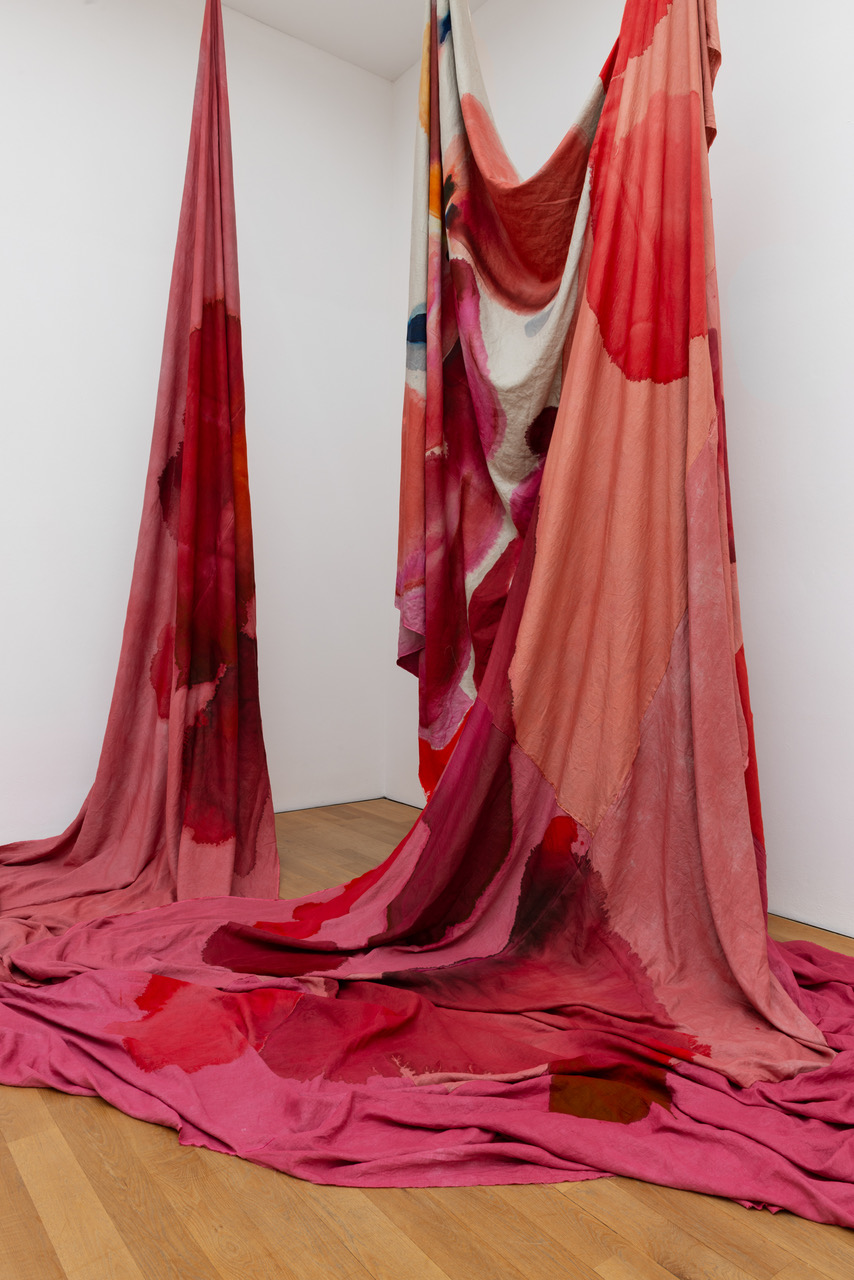
Nadine Schemmann: Work in Progress, 2024, 6 x 5 x 4 m (variabel). Galerie Norbert Arns.
At first glance, one might mistake it for leftover transport material left behind. Yet, upon closer inspection, the fabric reveals itself as untreated canvas, adorned with flowing color gradients that captivate the observer. Nadine Schemmann has imbued her work with a sense of marvel and wonder, inviting viewers to delve into the folds where movements oscillate between concealment and revelation.
Her paintings, which find their most intriguing expression in her sculptures, often evoke human encounters and the memories they leave behind. Each encounter is subjective, colored by individual interpretations and perceptions, resulting in a multitude of realities. Schemmann skillfully captures this ephemeral essence, offering a delicate yet profound exploration of human experience.
Born in Solingen in 1977, Schemmann has been dedicated to her craft as a visual artist since 2018. Her work serves as a testament to the power of art to evoke emotion, provoke thought, and illuminate the intricacies of human connection.
GROELLE
Jaana Caspary “Bubbles”
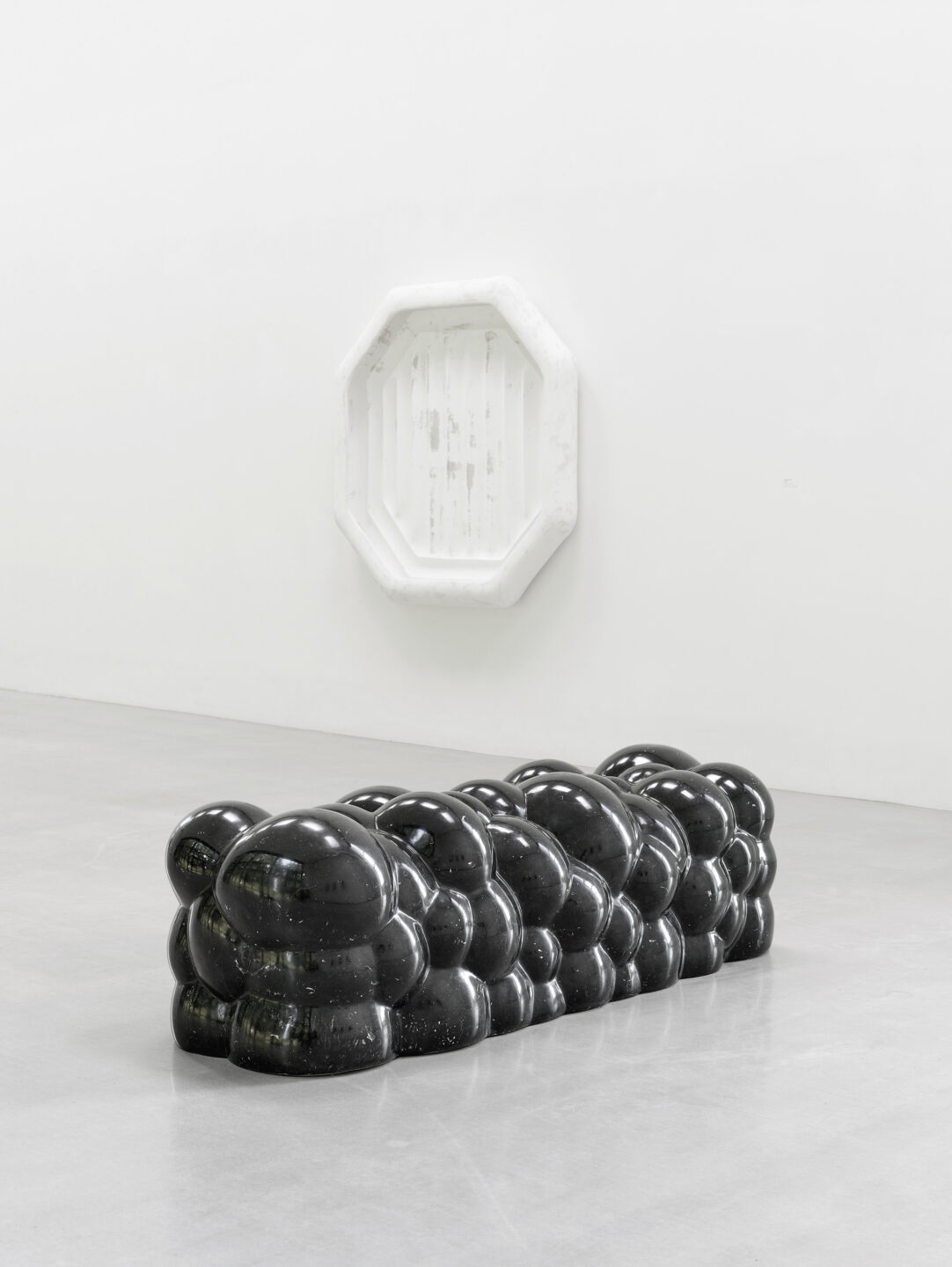
Jaana Caspary: Bubbles, 2023, 58 x 72 x 200 cm. GROELLE.
Caspary’s artistic vocabulary draws inspiration from nature, yet it is meticulously crafted through the repetition of chosen elemental forms. This is evident in “Bubbles”, where the sculpture’s allure is immediate, tempting viewers to reach out and touch its glossy, deep black spheres, evoking images of inflated anthropomorphic shapes often encountered in augmented reality. Through the continuous repetition of these forms, a cohesive and supportive structure emerges.
In Caspary’s creations, appearances can be deceiving. What initially appears lightweight may, in fact, be hewn from stone. Such is the case with “Bubbles”, crafted from the substantial Nero Marquina marble, yet resembling oversized inflated blueberries melded together to form a functional piece of seating. Born in Wuppertal in 1988, Caspary epitomizes a generation seamlessly navigating the realms of digital aesthetics and analog reality.
Having studied at the Düsseldorf Art Academy until 2014 under the tutelage of Didier Vermeiren, Caspary has embraced this dichotomy in “Bubbles”, inviting viewers to test their resolve as they resist the impulse to touch the sculpture.
Konrad Fischer Galerie
Richard Long “Rhine Driftwood Line”
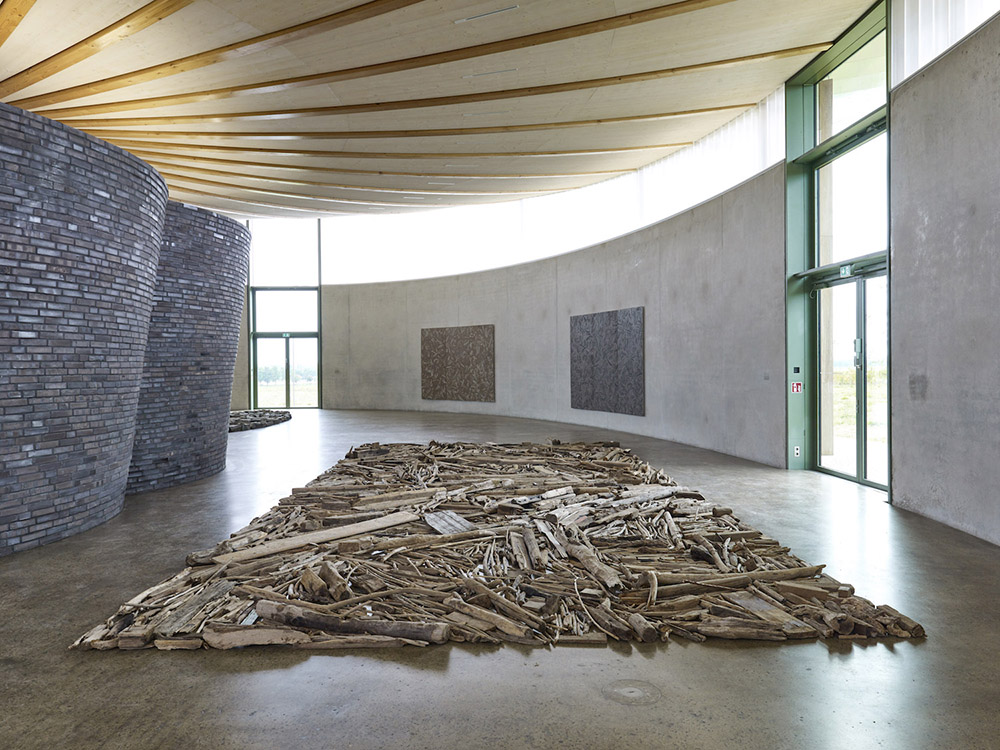
Richard Long: Rhine Driftwood Line, 2001, 15 x 500 x 1000 cm. Konrad Fischer Galerie.
Driftwood collected from the Rhine sprawls across the ground, its placement deliberate and purposeful — a creation by the renowned British artist Richard Long. At Art Düsseldorf, it seems fitting that Long, a prominent figure in Land Art, is represented by such a work. Long’s approach to nature is deeply connected and imbued with poetry, evident in this piece dating back to 2001.
The driftwood, while seemingly mundane, serves as a potent metaphor for both the human condition and the state of nature itself. It invites contemplation on mankind’s impact, symbolizing both our existence and the ecological deterioration wrought by human activity. Long’s work encapsulates these multifaceted interpretations, underscoring his enduring relevance and continued intrigue as an artist of his generation.
Born in Bristol in 1945, Long’s artistic journey has seen him participate in multiple Documenta exhibitions and represent Great Britain at the 37th Venice Biennale in 1976.
Schönewald Fine Arts GmbH
Andreas Schmitten “Geburt & Die Andere” & “Prop”
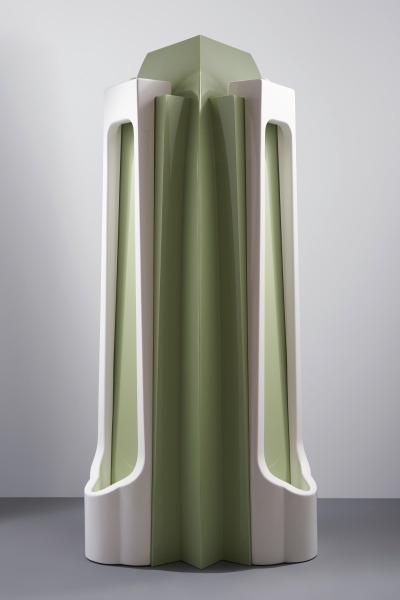
Andreas Schmitten: Prop, 2017, Kunststoff, Lack, hbt 208 x 94 x 70 cm. Foto: Andreas Fechner.
At first glance, Andreas Schmitten’s sculptures captivate with their sugary, pastel hues, exuding an air of sweetness and charm. Yet, beneath their alluring facade lies an unsettling quality, hinting at something amiss within the saccharine interiors he constructs. This disquiet stems partly from the sculptures’ resemblance to urinals or washbasins, rendered devoid of their intended function. Stripped of meaning and rendered alien by their vibrant colors, these objects defy easy classification.
Framed by a gentle aureole, the provocative exhibition of this purposelessness disrupts the mundanity of everyday life, drawing attention to the inherent strangeness within familiar objects. Schmitten’s sculptures merge the luminous surfaces of modernity with an interrogation of their own utility.
Born in Mönchengladbach in 1980, Schmitten honed his craft at the Kunstakademie Düsseldorf until 2012, where he continues to reside and create.
Galerie Droste
Katharina Keller “Siberian Brutalism”
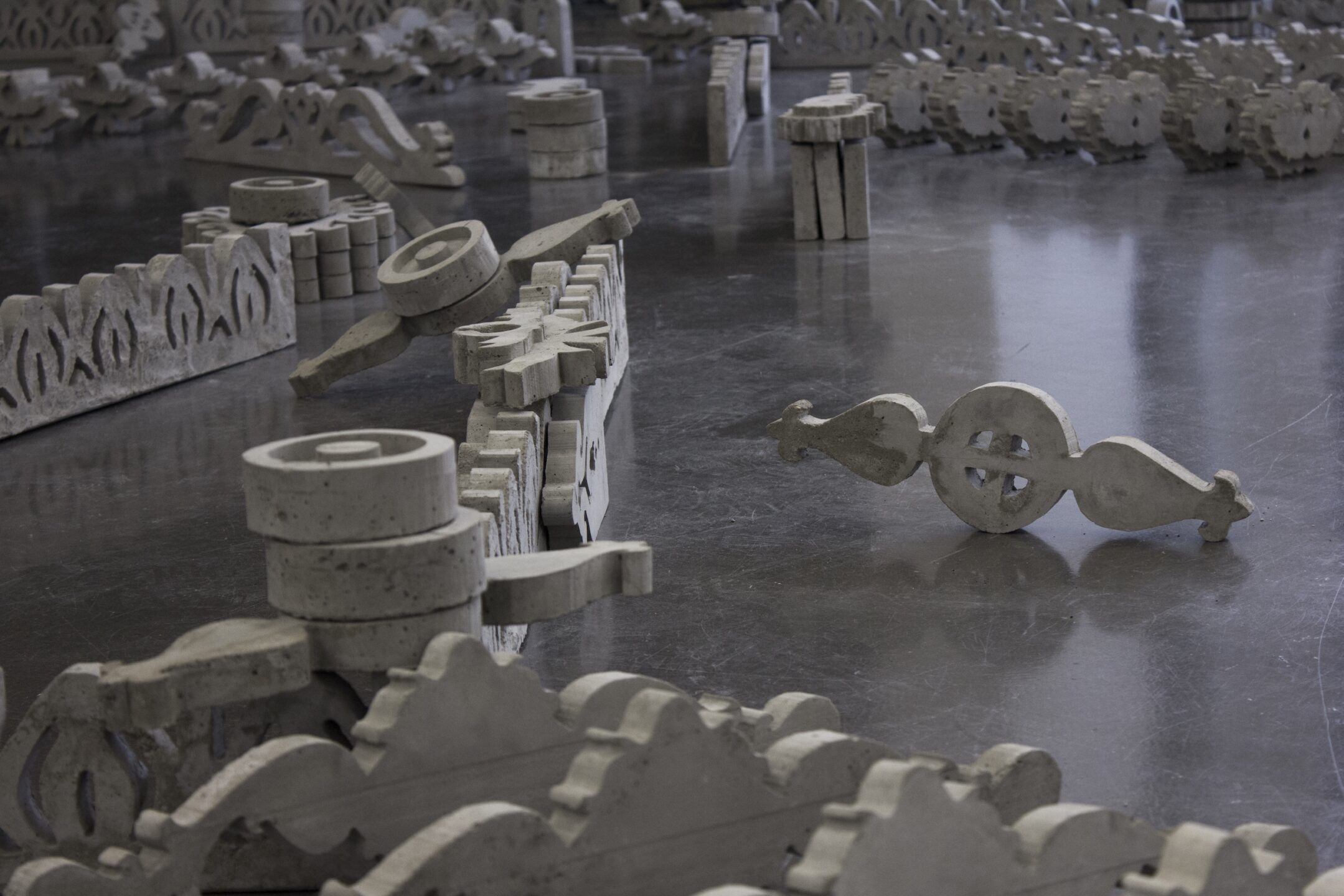
Katharina Keller: Siberian Brutalism, 2018, 2 x 3 m. Galerie Droste.
Katharina Keller’s work “Siberian Brutalism” features gray concrete blocks arranged on the floor in various configurations, evoking the architectural style of brutalism. Drawing from her archive of found ornamental forms used in Siberian wooden architecture, the artist imbues her work with clear material references.
Across her sculptures, videos, and installations, Keller intertwines personal recollections with broader inquiries into concepts of belonging and home. She explores how design elements and architecture contribute to the collective experience of identity and belonging. The stone ornaments and fragments from Siberia, recontextualized in different scales, combinations, and materials, serve as both vessels of collective memory and building blocks for new spatial structures.
Born in Omsk in 1990, Katharina Keller is currently studying fine art at the Kunstakademie Düsseldorf under the mentorship of Dominique Gonzalez-Foerster.
Clages
Christian Theiss “Schwanensee”
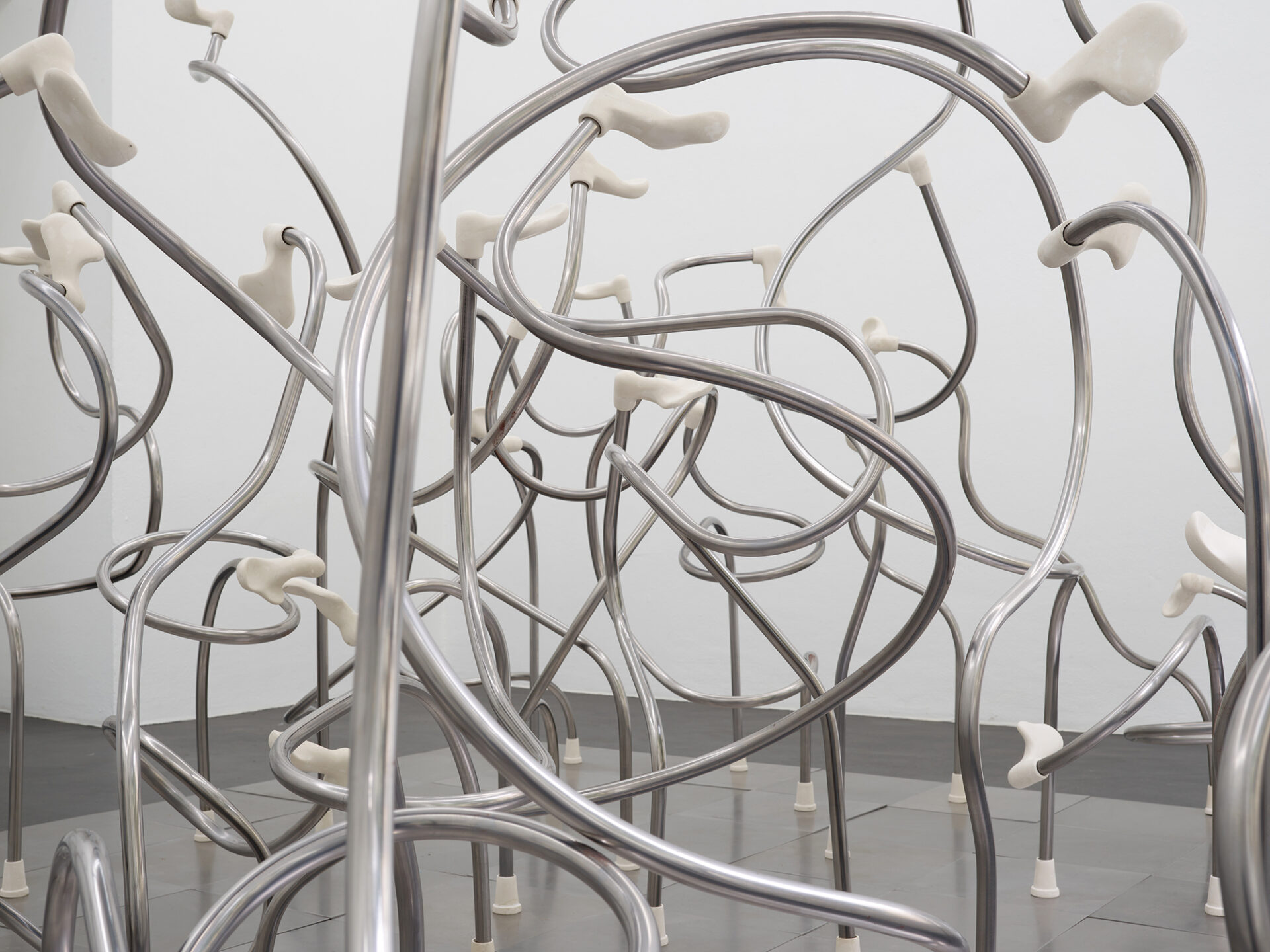
Christian Theiss: Schwanensee, 2020, 330 × 240 cm. Clages.
In Christian Theiss’ installation “Swan Lake,” the ergonomic walking sticks take on a mesmerizing performance reminiscent of dancing ballerinas in white tutus. Against a backdrop of metal floor panels, evoking the aesthetics of Minimal Art and Carl Andre’s works, these everyday aids twist and turn, transcending their conventional form and function.
Within the tangled web of metal rods, Theiss provokes contemplation on the delicate balance between frailty, aging, and illness juxtaposed with dynamism, mobility, and youth. Firmly anchored to the floor with rubber stoppers to prevent slippage, the metal poles elegantly twist in the air like the necks of swans, inviting individuals of all ages to become captivated by their choreography.
Born in Meerbusch in 1988, Christian Theiss currently resides and works in Düsseldorf. He pursued his studies at the Kunstakademie Düsseldorf under the guidance of Rosemarie Trockel.
Petra Rinck
Emma Talbot “When Screens Break”
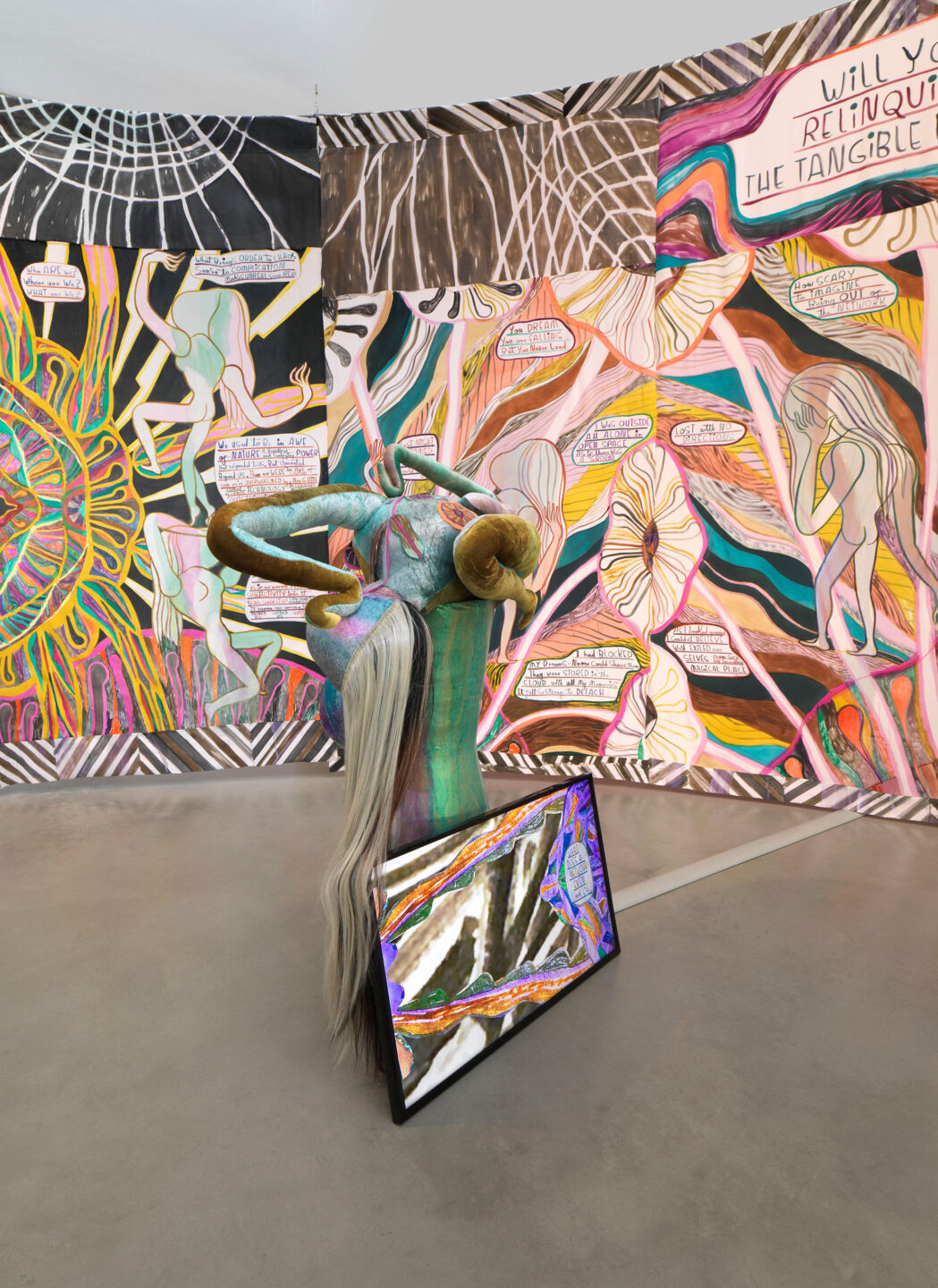
Emma Talbot: When Screens Break, 2020, 3 x 1,5 x 3 m. Petra Rinck.
Emma Talbot’s installation “When Screens Break” poses a poignant question: “Will you give up the tangible world?” This thought-provoking artwork comprises silk banners arranged in undulating waves, accompanied by an imagined media sculpture. Within this transitional space resides a twisted, long-haired textile figure, emblematic of the fluidity between realms.
The immersive experience draws viewers into a dynamic dimension where waving silk scarves intertwine with video images, blurring the boundaries between reality and imagination. Pensive figures traverse the currents, assuming unambiguous poses amidst prophetic speech bubbles and flowing liquids within round and oval passages.
Talbot’s work delves into transitions between virtual and physical realities, addressing the dependence on artificially constructed spaces, networks, and associated devices. Voices of fictional entities – ghosts, witches, and oracles – deliver prophetic messages concerning a future caught amidst ecological and political turmoil, where the lines between digital and physical worlds dissolve.
Born in Stourbridge in 1969, Emma Talbot currently resides and works in London and Italy.
KOW
Clegg & Guttmann “Cognitive Exercise III: Continuous Drawing / Exquisite Corpse”
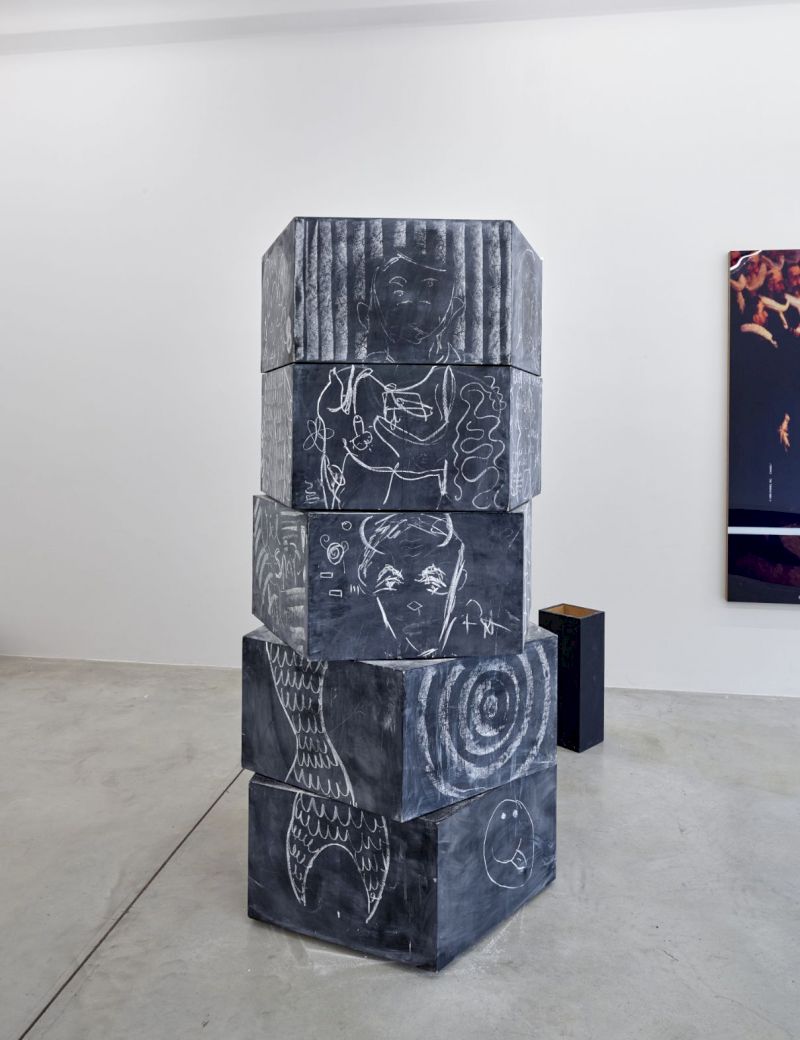
Clegg & Guttmann : Cognitive Exercise III: Continuous Drawing / Exquisite Corpse, 2006, 205 x 0.9 x 0.9 m. KOW.
The column created by the artist duo Clegg & Guttmann, coated in a matte gray board varnish and divided into five segments, serves as an interactive platform for collective creativity. Participants are invited to engage in a shared cognitive task, using the pentagonal playing surface as a canvas for drawing. Free boards and chalk are provided, encouraging players to explore their imaginations: will they sketch faces, body parts, animals, or other creatures?
As the drawing session unfolds, participants rotate the painted segments, passing the column to the next player. With each rotation, a new composition emerges, challenging individuals to adapt their drawings to the evolving surface. The process continues until several rotations have occurred, resulting in a collaborative tapestry of gray-white chalk figures and objects – unique manifestations of collective thought.
Clegg & Guttmann, comprising Michael Clegg, born in Dublin in 1957, and Martin Guttmann, born in Jerusalem in 1957, are renowned for their innovative and interactive artworks that blur the boundaries between artist and audience.
Jahn & Jahn
Alexi Tsioris “Pinch & Snatch”
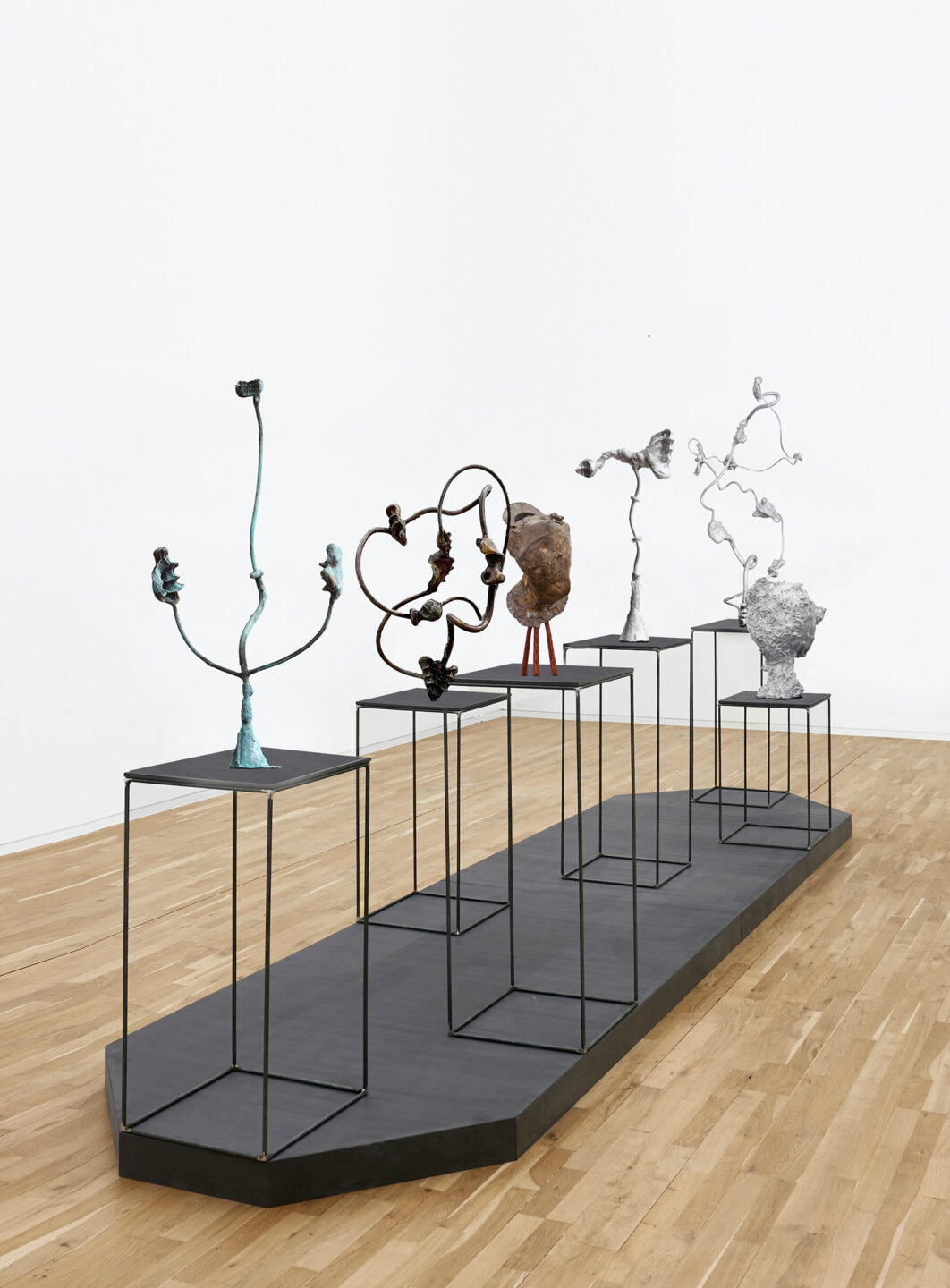
Alexi Tsioris: Pinch & Snatch, 2023, 4 x 1,2 m. Jahn & Jahn.
On individual pedestals, Alexi Tsioris’ sculptures stand, their forms resembling organic structures reminiscent of coral, gently undulating as if moving against an invisible current. His works exist in a realm between the organic and the classically sculptural, with traces that evoke images of flower pistils or impressions of teeth, subtly referencing elements of nature.
Tsioris’ journey into sculpture was influenced by his drawings, each of which could be seen as a preliminary study, though devoid of direct references. There’s an ethereal quality to his sculptures, where chance is embraced and layers upon layers accumulate, merging past and present. The underlying layer remains visible, not concealed but elevated on its pedestal, akin to an esteemed bust or a venerable head, hinting at potential futures yet to unfold.
Born in Athens in 1982, Tsioris honed his craft as a master student of Nikolaus Gerhart in Munich, where he currently resides and works.
Galerie Löhrl
Paul Diestel “Avena”
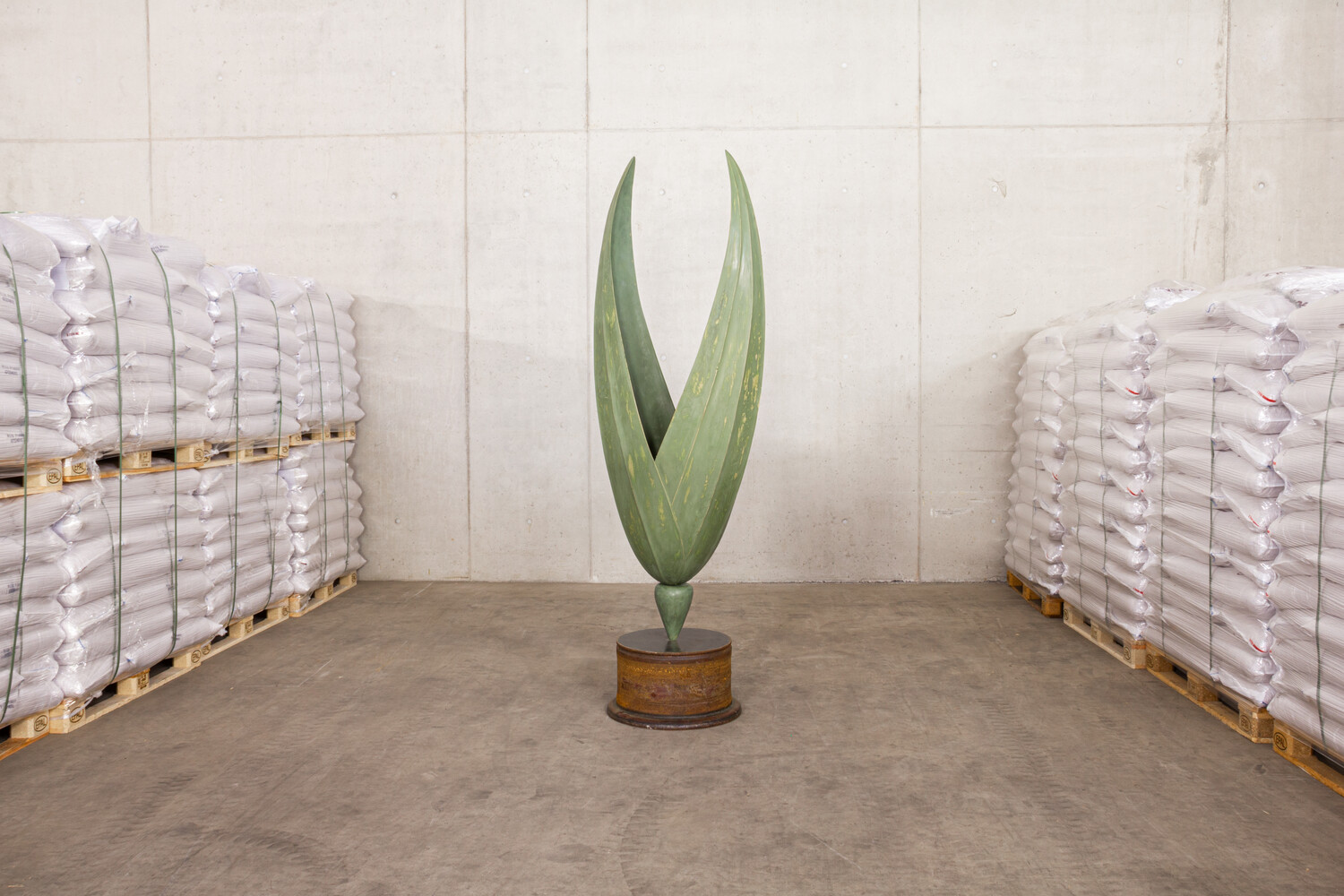
Paul Diestel: Avena, 2024, 2,42 x 0,83 x 0,52 m, Pappelholz, Erdpigment, Kalk, Stahlfelge. Galerie Löhrl.
(Foto: Janina Kürschner)
Paul Diestel’s sculpture “Avena” captivates with its sensual and seemingly poised-to-soar form, replicating the delicate husk of an oat grain, akin to a biological teaching model. Covered with layers of soil, the sculpture undergoes a perpetual process of drying out and transformation. In his artistic practice, Diestel draws inspiration from natural forms such as seeds, cones, and plants, magnifying and reconstructing them using various types of wood.
Employing sustainable materials sourced from nature—such as earth, ash, and lime—Diestel meticulously applies multiple layers to the wooden objects, compacting and polishing them to perfection. His sculptures serve as snapshots of nature, capturing the daily growth and organic evolution inherent in the natural world.
The oat husk, placed delicately on a plinth, echoes the shape of a chalice or ritual vessel. Its harmonious natural form exudes a sense of tranquility and significance, reminiscent of the graceful growth observed in nature’s cycles.
Born in Schweinfurt in 1996, Paul Diestel currently resides and works in Unsleben. He pursued his studies at the Kunsthochschule Kassel under the mentorship of Prof. Norbert Radermacher and Prof. Mirjam Thomann.
Thomas Rehbein
Heinz Breloh “Harry und ich”
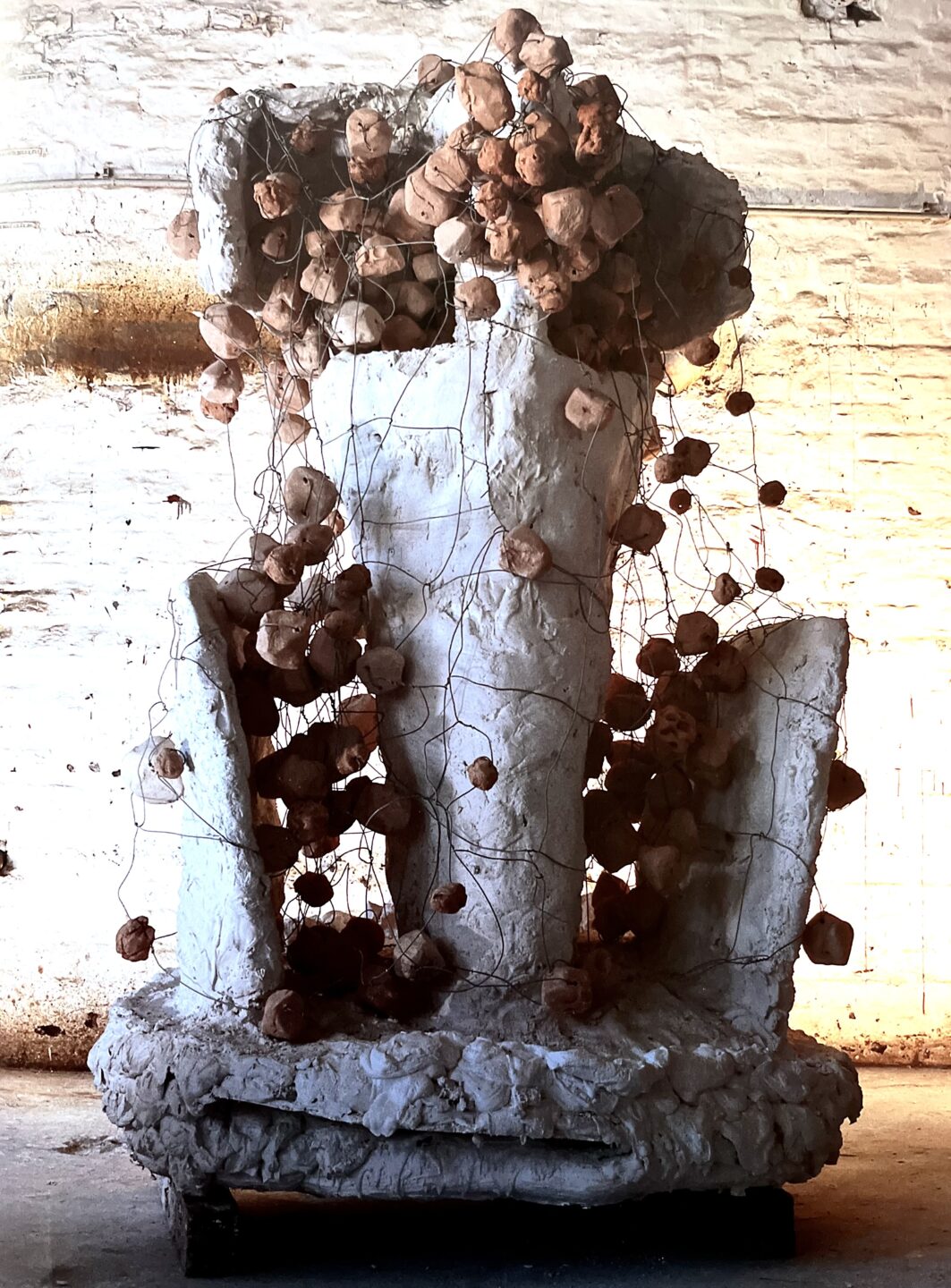
Heinz Breloh: Harry und ich, 1998, 200 x 117 x 130 cm. Thomas Rehbein.
Heinz Breloh’s sculpture “Harry und Ich” offers a captivating exploration of the artist’s presence and creative process. Within a life-size white plaster volume, Breloh’s negative space and body imprint are palpable, serving as tangible manifestations of his artistic endeavors.
The sculpture unveils the intricacies of Breloh’s working process, wherein the gap he left behind while sculpting becomes a testament to his movement through space. Net-like metal wires adorned with fist-sized lumps of clay dangle from the plaster, choreographing a dynamic interplay of form and motion. These clay lumps, akin to Breloh’s wandering thoughts on the body, movement, and space, encircle the cone-shaped sculpture – a signature motif in his work.
At the heart of Breloh’s inquiry lies a central question: What is space, and who leaves traces within it? Through “Harry and I,” Breloh invites viewers to contemplate the interplay between presence, absence, and the imprint left behind by the artist’s hand.
Heinz Breloh (1940-2001) was a German artist renowned for his contributions sculpture art. His creative vision was showcased on a global stage, including the participation in Documenta 6 in 1977.